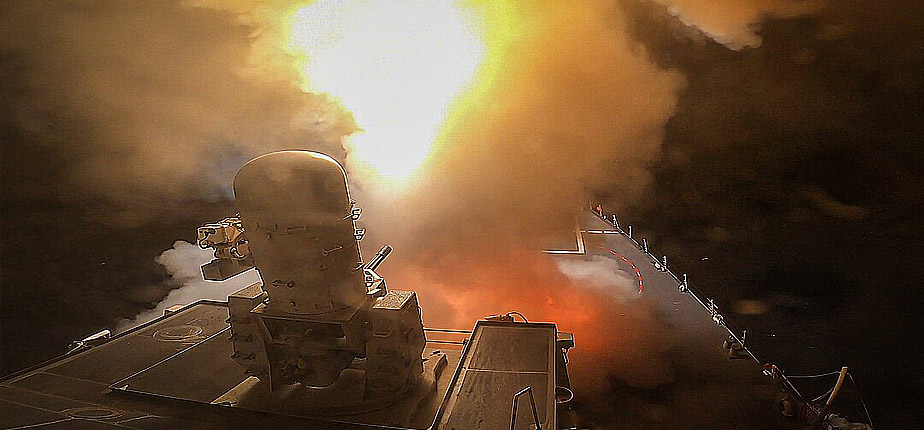
Mohammed Abdullah, Sana’a, Yemen
As Israel’s war on Gaza stretches into its second year—a conflict framed by Israeli leadership as a battle between barbarism and civilisation—the turmoil has spilled far beyond the borders of the besieged enclave.
Across the Red Sea and Gulf of Aden, another crisis has unfolded, shaking one of the world’s most critical maritime corridors. Over the past year, the waters have become a battleground as the Houthis, also known as Anṣār Allāh, launched dozens of attacks on commercial and naval vessels, framing their actions as a “sacred jihad” in solidarity with the Palestinian cause.
This unprecedented wave of maritime unrest has drawn some of the world’s most formidable naval powers into the region, including US and British warships and aircraft carriers, which they claim are safeguarding the freedom of navigation. Yet, the escalating tensions have not only disrupted global trade but also sparked fears of broader regional destabilisation.
In recent months, the US has intensified its military campaign, deploying advanced weaponry to counter the Houthis’ growing capabilities. On November 9 and 10, US Navy and Air Force assets conducted a series of precision airstrikes on Houthi weapons storage facilities in Yemen. These facilities, according to US Central Command (CENTCOM), contained advanced conventional arms, including anti-ship missiles allegedly used to target civilian and military vessels in international waters.
The US strikes involved the F-35C Lightning II fighter jet, which saw its first combat deployment in these operations. Marine Fighter Attack Squadron 314, operating from the USS Abraham Lincoln, executed the strikes, marking a significant moment in the evolving maritime conflict. “The F-35C demonstrated its warfighting advantage by transiting contested airspace and striking targets in the heart of Houthi territory over multiple days,” said US Marine Lt. Col. Jeffrey “Wiki” Davis.
In retaliation, the Houthis launched two high-profile operations targeting US naval forces. According to Houthi military spokesman Yahya Saree, their forces struck the USS Abraham Lincoln in the Arabian Sea with cruise missiles and drones while also targeting two American destroyers in the Red Sea. CENTCOM confirmed the engagement but stated that US forces successfully intercepted the attacks, neutralising eight unmanned aerial systems, five anti-ship ballistic missiles, and four cruise missiles.
While no injuries or damage to US personnel or equipment were reported, the Houthis’ audacity and advanced weaponry drew concern from US defence officials. “What the Houthis have done in the last six months is shocking,” said Under Secretary of Defence Bill LaPlante, highlighting the sophistication of their missile and drone capabilities.
The Houthi campaign has disrupted maritime activity on an extraordinary scale. A recent UN Security Council report documented at least 134 attacks on merchant and naval vessels in the Red Sea and Gulf of Aden between November 2023 and July 2024. Among the targeted vessels, 31 were oil or chemical tankers, with seven sustaining significant damage but continuing navigation. The violence has resulted in the deaths of at least four seafarers, while more than 2,000 ships have been forced to alter their routes to avoid Houthi-controlled zones.
Lloyd’s List recently identified 219 Red Sea incidents involving the Houthis, with Greek-owned vessels disproportionately affected. Greek-affiliated ships remain a high-risk target for Houthi attacks, underscoring the group’s strategy of disrupting maritime trade linked to Western powers.
Coalition forces, led by the US and its allies, have responded with a series of airstrikes and interceptions aimed at neutralising the Houthi threat. Recent data from CENTCOM underscores the scale of these efforts, revealing that 833 Houthi weapon systems have been either destroyed or intercepted in the past year. These include 15 ballistic missiles and 238 cruise missiles, of which 66 were intercepted mid-flight, along with hundreds of other weapon systems.
As maritime confrontations escalate, the Houthis have also significantly increased their military presence on land, raising the spectre of a broader conflict. Local reports indicate that the group has moved thousands of fighters and heavy weaponry to Al-Hodeidah, a governorate overlooking the Red Sea that is of critical strategic importance. In the Al-Jarahi District, residents of five villages have reportedly been displaced as the Houthis establish military sites equipped with missile platforms, Katyusha rocket batteries, engineering equipment, and other heavy arms.
This buildup appears to signal preparations for a potential ground conflict in Al-Hodeidah Governorate, located 140 miles west of the capital, Sana’a. Forces loyal to the internationally recognised government, supported by the Saudi-led coalition, have intensified their pressure in the region. Al-Hodeidah has long been seen as a critical battleground due to its strategic access to the Red Sea and its role as a vital conduit for humanitarian aid and commercial shipping into Yemen. While the Houthis assert their actions are rooted in strategic self-defence, their increased militarisation in Al-Hodeidah underscores the rising tensions with opposing Yemeni forces.
A year into the turmoil in the Red Sea, the conflict continues without any signs of abating. The Houthis remain resolute in their confrontational stance, escalating both their maritime and land-based operations. Meanwhile, the US and its allies are ramping up their military presence, deploying cutting-edge technology to counteract the Houthi threat.
As the Red Sea continues to churn with conflict, the stakes for global security and maritime trade remain high. What began as a localised power struggle now threatens to reshape the geopolitical landscape of one of the world’s most vital waterways.
Photo:The USS Carney (DDG 64) intercepts Houthi missiles and UAVs in the Red Sea on October 19, 2023, as part of its deployment to the U.S. 5th Fleet to support regional maritime security. (Credit: U.S. Navy/Mass Communication Specialist 2nd Class Aaron Lau)